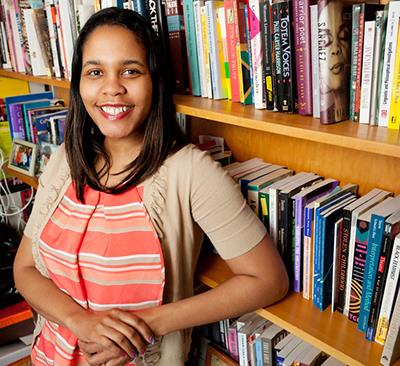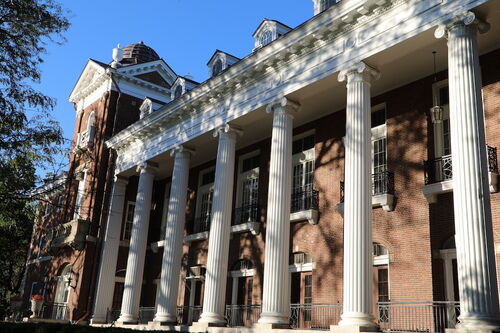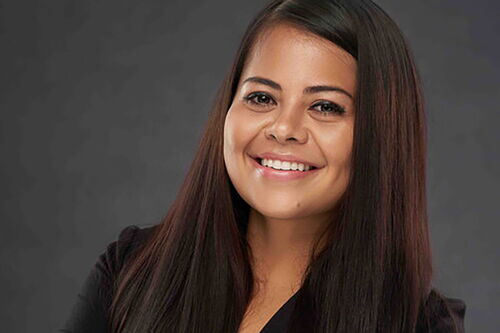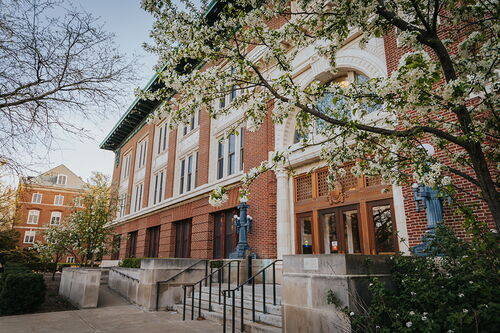Listen to the Girls

If you were studying the behavior of African American girls, how might you collect your data? You’d watch them, of course. Well, as Ruth Nicole Brown knows, it’s not that simple—and her methods of researching female behavior are gaining attention across the country and recently earned her a slot in the first-ever White House Research Conference on Girls.
The conference was intended to find ways to better publicize research on girls, and share ideas on how to overcome obstacles in the research itself. Brown, a professor with a joint appointment in gender and women’s studies and educational policy, organization and leadership, has been dealing with these questions since she was a student.
As a graduate student at the University of Michigan, she observed a girl’s empowerment program. What she saw would eventually shape her own manner of dealing with young girls—but only because she saw what she didn’t want it to be.
“I saw that with girls of color, particularly Black girls, the more they use their voice the more they were punished, or silenced, or marginalized, and I thought that was ironic in a girl empowerment program,” Brown recalls. “I just kept thinking there had to be a space where being an empowered girl didn’t have to look just one way.”
That experience stayed with her after she accepted a faculty position at the University of Illinois. Before long, she launched a group called Saving Our Lives Hear Our Truths (SOLHOT), focused upon providing a space for African American girls to “celebrate” Black girlhood, as Brown describes it—or, in other words, where the girls can just be themselves, working together to question the social and political conditions surrounding their lives, and make art and relationships that can point to new arrangements of power that respect Black girls’ personhood.
SOLHOT has met in libraries, schools, local youth-serving nonprofits, and other places in Champaign-Urbana, with a team of volunteers (many of them students at Illinois) transforming the spots into places where all involved can feel welcome. They engage in play, art-making, political education, discussions, and time set aside intentionally to remember a loved one.
Participation is voluntary, and so far the program has worked with at least 300 local girls, Brown says, with ages wide-ranging. As a researcher, she is involved in every aspect of the work, from engaging with the girls, training volunteers, and organizing, while, at the same time, keeping a scholarly eye upon the proceedings by documenting and analyzing the questions, conflicts, and issues that emerge as significant to the group and speak to academic considerations of Black girlhood.
Brown has written two books based on SOLHOT, with the first, Black Girlhood Celebration toward a Hip Hop Feminist Pedagogy, being a description of the program, its process and goals, and how it differs from how prevailing academic studies frame girl empowerment. For example, it describes how local history, place, and space were felt by black girls as expressed through dance, movement, and music-making in SOLHOT during the girls’ game Little Sally Walker.
Her second book, Hear Our Truths! The Creative Potential of Black Girlhood, details the creative work made in SOLHOT to form theories about youthful Black girl feminism, relationships between girls and women, and creativity.
“A lot of academic literature positions Black girls from a deficit model perspective in terms of what they’re lacking, in terms of problems to be solved. Disciplinary and social problems are given much attention in research about Black girls,” Brown says. “That frame is so heavy and so dominant that people tend to think that is the only or most valid way of incorporating girls in academic conversation, but we know better than that. So that’s what our academic work does. We’re transforming the academy by creating a new cadre of Black girl scholars who are advancing new theories and methods that allow for a wider range of conversations to be had about Black girls that begins with a recognition of their power and being.”
SOLHOT is so compelling that Brown received an invitation to talk about it at the White House conference, along with other presenters. While the president was not able to attend, members of his staff were present, and Brown says the participants felt that they were able to convey the message that research on girls needed more support.
One takeaway from the conference was the planning of a Girls Research Portal, in hopes of making research on girls more accessible to a wider audience.
“Our research has always been accessible in that we have circulated our work in many forms, but now we want to take it up another level,” Brown adds. “Beyond accessibility, we strive for research that engages the public. We see the difference between working with and studying a group. We work with them as partners in a very collaborative way to create knowledge.”
SOLHOT is catching on, she says. She’s heard from groups in South Carolina, New York, and California that are interested in the model, and Brown and her colleagues are working on ways to create a “digital” SOLHOT that can be found online. They are inspired by an arts-based organization in Detroit called Complex Movements, which explores relationships between science and “social movements” such as hip hop.
“They are really on the vanguard just in terms of using the arts, technology, and science to create social change,” Brown says. “SOLHOT is a student of Complex Movements, local groups in Champaign-Urbana including Paradigm Shift, K.N.O.C.K., the Gr8 Thinkaz, and scholars in the academy such as Dr. Elaine Richardson. We are trying to figure out how to bring people who think black girl feminism is just for black girls into the deep work of SOLHOT, because what we know means greater justice for us all. We’re watching and learning from what they are doing and trying to add our own SOLHOT twist.”








